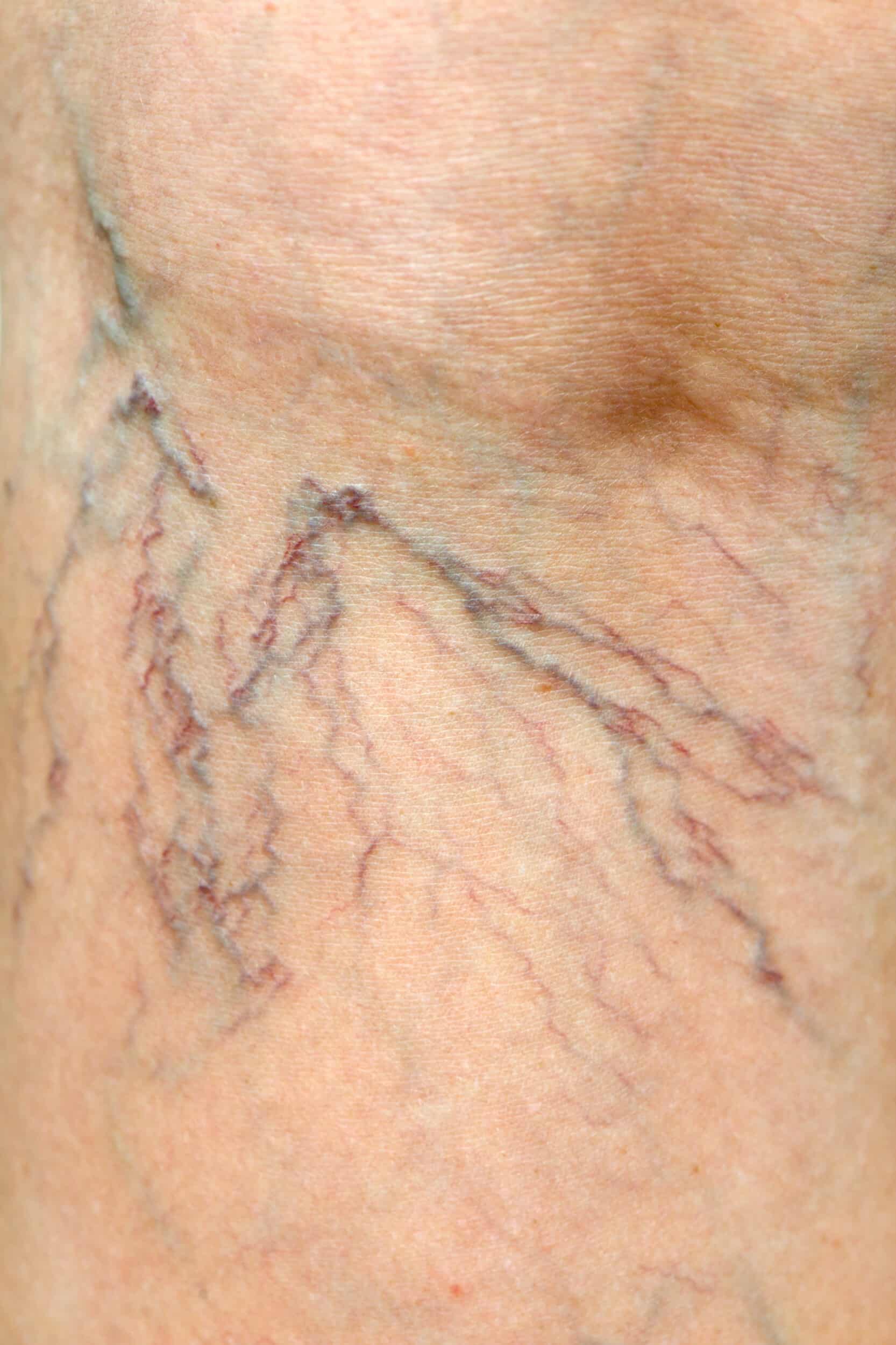What Are Spider Veins?
With nearly 55% of women and 45% of men having some sort of vein disease, spider veins are a common sight. Varicose veins, while similar and often confused with spider veins, are much larger and look like bulging or twisting rope. Spider Veins are broken capillaries, formally named telangiectasias, which are red, blue or purple thread-like veins (less than 2mm in diameter, flat or raised) on the surface of the skin.
Though smaller than most varicose veins, spider veins are often darker and more noticeable. This is because these veins are located just below the surface of the skin. The larger variant of spider veins, reticular veins, are up to 3 mm in diameter and have a bluish green appearance and are often associated with telangiectasias.

More common in women, spider and reticular veins may be triggered by pregnancy or hormonal variations. Spider veins may result in itching, leg restlessness, aching, and throbbing. Bleeding may also occur from traumatized spider veins from shaving or household chores. Non-symptomatic spider veins may also be found on the face and chest as well as the legs. Although surface veins are considered by some to be a cosmetic problem, they can also be just as symptomatic as classic varicose veins.
What Is Surface Sclerotherapy?
The gold standard for spider and reticular vein treatment remains surface sclerotherapy. A very fine needle is used to inject a solution (sclerosant) directly into the veins. This solution causes an inflammatory reaction that the lining of the veins to swell and eventually seal off the blood vessel, preventing blood flow. Newer sclerosant medications have greatly reduced the pain, inflammation, and post-procedure discomfort previously associated with surface vein treatment.
Contact our office today at (630) 425-0800 to schedule an appointment with Dr. Kern and begin your journey to healthier, pain free legs.

